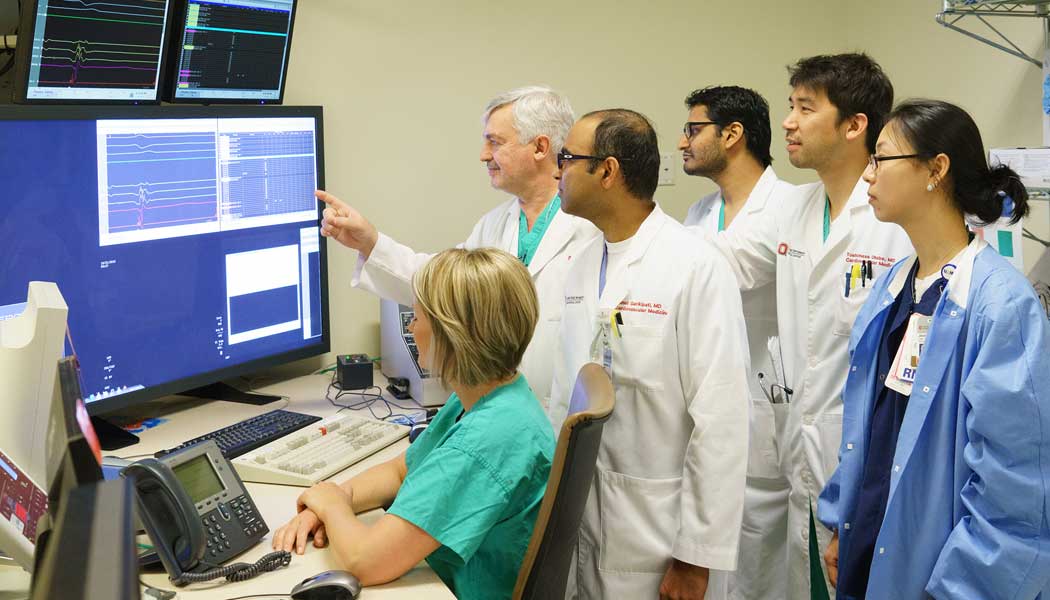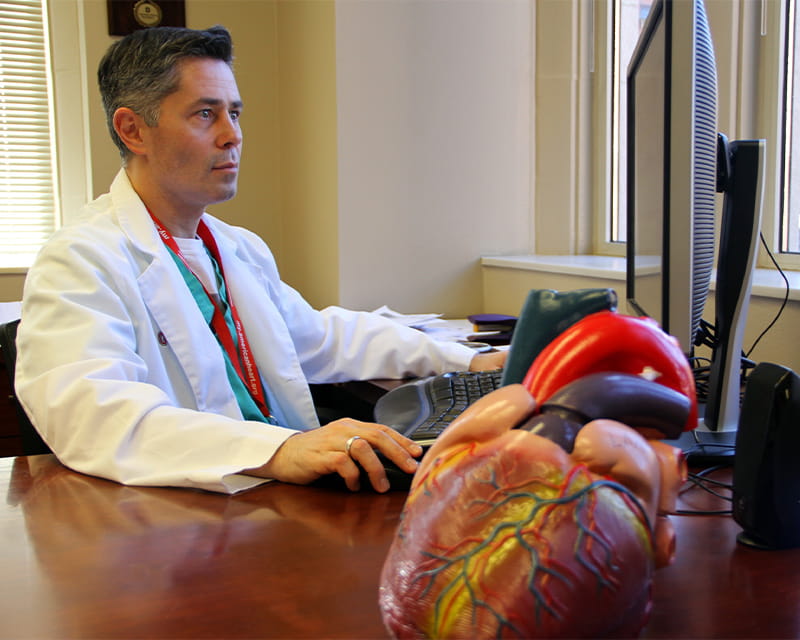
Safer Patient Transport

Electrophysiologist Dr. Raul Weiss with a team of researchers at Ohio State.
The Inherited Arrhythmia Clinic provides a full spectrum of care, assessing family
history and patient risk. It offers genetic testing, prevent
ion strategies, medical
procedures as needed, pharmacological support and psychological support.
Dr. Weiss clinically studies patterns within families, including how many have
defibrillators and whether anyone in the family has experienced sudden cardiac
death.
Because inherited arrhythmias can span a lifetime, Ohio State works in close
collaboration with Nationwide Children’s Hospital in Columbus.
Dr. Weiss compares looking for an abnormal gene to finding a misspelled word
in a book. “You have to look at
the chapter, the page, the word and the letter.”
At Ohio State, genetics testing can be performed to discover new genetic
diseases.
Read more featured stories about The Ohio State University Heart and Vascular Center.

Safer Patient Transport

New treatment for atrial fibrillation

First US Medical Center in Clinical Trial